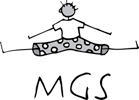Key Takeaways
- Both acupuncture treatment and dry needling treatment use thin needles, but they rely on different philosophies: traditional Chinese medicine versus modern physical therapy science.
- Traditional Chinese medicine views acupuncture points as pathways for balancing the body’s life force or Qi, while trigger point dry needling targets muscle tension and neuromuscular pain directly.
- Dry needling treatment helps relieve myofascial trigger point pain, restores muscle function, and increases blood flow, making it a common practice in sports and physical therapy.
- Acupuncture practitioners focus on specific acupuncture points and the flow of energy to treat pain and promote overall well-being through complementary and alternative medicine.
- Understanding both acupuncture and dry needling makes it easier to choose the right pain management strategy for musculoskeletal and chronic pain needs.
Needle-based therapies are increasingly popular for treating pain and stiffness, but not all techniques are the same. Two of the most recognised approaches are dry needling and acupuncture treatment. At first glance, both involve inserting thin needles into the skin to relieve pain; yet, their origins, purposes, and applications in clinical practice are distinctly different.
If you are considering either alternative medicine method for chronic pain, sports recovery, or muscle tightness, it helps to understand what makes them different. A qualified physiotherapist at MGS Physio can recommend the most effective approach for your specific needs.
Traditional Chinese Medicine vs. Modern Physical Therapy
Acupuncture is a key part of traditional Chinese medicine (TCM) and oriental medicine. It is designed to maintain balance in the body’s energy flow, or Qi. Practising acupuncture involves inserting needles at specific points mapped on an acupuncture chart to improve internal harmony and treat pain.
In contrast, dry needling treatment was developed within physical therapy and Western medicine. This method utilises anatomical knowledge to release muscle trigger points, enhance blood flow, and address musculoskeletal pain at its root cause.
Acupuncture is generally considered part of complementary and alternative medicine, whereas dry needling is a component of evidence-based physical therapy treatments that focus on restoring muscle health and mobility.
How Each Technique Works
Both acupuncture and dry needling rely on inserting needles into the body, but the underlying reasons and the locations chosen are different.
Acupuncture treatment uses thin, sterile needles to stimulate specific points along meridians that connect to organs and systems. This can enhance blood flow, affect nerve pathways, and trigger the release of endorphins, which can help decrease pain. Over time, acupuncture sessions can help manage chronic headaches, postoperative pain and nausea, and a wide range of both internal and external conditions and symptoms.
Trigger point dry needling focuses on myofascial trigger points within skeletal muscle. Physical therapists use disposable needles, often with a plastic guide tube, to release the tight bands of muscle fibres that cause pain. This can produce a brief local twitch response, indicating that the trigger point has been released. Deep dry needling may be used for chronic or severe muscle tightness, whereas superficial dry needling can target pain closer to the surface or within connective tissue.
Because dry needling is part of sports physical therapy and pain management, it is often applied to conditions such as neck pain, shoulder pain, muscle pain, and injury-related stiffness.
Pain Management in Clinical Practice
In clinical practice, both acupuncture and dry needling can be used to address musculoskeletal pain and aid rehabilitation. Their fundamental difference lies in their treatment goals.
Acupuncture practitioners often approach pain as part of the body’s wider balance, aiming not only to relieve pain but to support emotional and systemic health. Some modern practitioners combine traditional practices with electrical stimulation for longer-lasting effects.
Physical therapists use dry needling to release trigger points, improve range of motion, and target specific pain patterns caused by dysfunctional muscle fibres. This approach is supported by research, including randomised controlled trials, and is considered an effective treatment for musculoskeletal conditions, neuromuscular pain, and sports injuries.
If muscle stiffness, reduced mobility, or localised pain is affecting you, dry needling at MGS Physio may be the targeted solution you need.
The Experience: What to Expect
While both treatments use thin, sterile needles, the sensations and after-effects differ.
During an acupuncture session, the needles typically remain in place for 20 minutes or longer. Many patients describe warmth, tingling, or a dull ache, often followed by deep relaxation. Medical acupuncture and Western medical acupuncture blend modern clinical knowledge with traditional theory to treat both energy imbalance and pain.
In a dry needling session, once the needle enters the myofascial trigger point, a local twitch response may occur. This can feel like a quick muscle contraction, followed by a sense of release. Increased blood flow and improved muscle function can help reduce pain and restore mobility. Dry Needling can be applied with varying levels of stimulation depending on the condition, the patient’s tolerance levels and the level of skill of the Dry Needling Therapist. Whilst some more vigorous Dry Needling techniques may be more uncomfortable than some more gentle versions, they can often elicit more noticeable and faster results.
Both treatments can be combined with other physical therapy techniques for enhanced recovery, particularly in sports physical therapy.
Choosing the Best Approach for You
The right choice depends on the outcome you want. If you are seeking holistic improvement for both body and mind, acupuncture as part of complementary and alternative medicine may suit you. It can help alleviate muscle pain while also promoting relaxation, stress reduction, and overall balance.
If your primary goal is to relieve muscle pain, release tightness, or treat referred pain, trigger point dry needling is likely the better option. It is precise, fast-acting, and designed to restore full muscle function.
At MGS Physio, our practitioners combine trigger point dry needling with targeted physical therapy treatments to address both immediate pain and long-term recovery goals.
